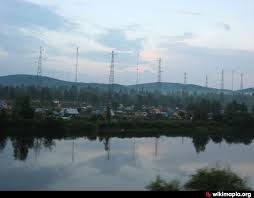 |
| Radio Rossii Chita via Wikimapia |
Russia
10 years ago, on January 9, 2014, at 1 AM, Radio Rossii stopped broadcasting as usual with the national anthem. It was not mentioned that the broadcasts were coming to an end. The next day listeners discovered they had to rely on local FM stations and the internet to hear the station.
Radio Rossii was the only state-run radio station with truly national coverage, in the federation Russia.
This station had been having issues with its broad wave transmitters. From January 25, 1954, the United States had put a powerful transmitter into service at Erching near Munich. he was broadcasting the Russian service of VOA on the same frequency as Radio Rossii in Moscow. In some parts of the soviet union. State radio was drowned by The Voice of America.
So in 1972, the Soviet Union began installing several powerful long-wave transmitters at 173 kHz, along the western border (Minsk, Kaliningrad, Lvov).
In 1973, the USSR won this war of airwaves: the VOA transmitter was turned off because listening in the Eastern countries had become impossible.
But let's go back to the 2000s, Radio Rossii had removed short waves in 2010, medium waves in 2013, and in 2014, big waves! So only the FM remained, whose network consisted of more than 1500 transmitters (mostly in the Russian FM band from 65.9 to 74 MHz).
In 2022, following the invasion of Ukraine, Radio Rossii had to review its copy and put the first transmitter back into service on April 5, 2022. The station has put back into service a former Radio Mayak transmitter located in Transnistria. It broadcasts 999 kHz, with 1000 kW power. By day it covers Balkans and Black Sea countries. At night, it is easily received throughout Europe, North Africa, and parts of Asia and the Middle East.
Another transmitter has also been put back into service, after a 10-year shutdown. This is the transmitter from Bolchakovo, in the Kaliningrad enclave, which broadcasts on 549 kHz and covers Poland, Eastern Europe, the Baltic States, the Republic of Belarus, and Northern Europe. Its power would be 600 kW.
(Radio Magazine)